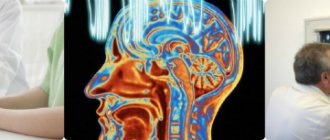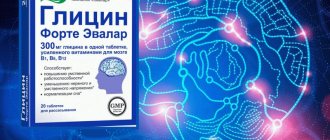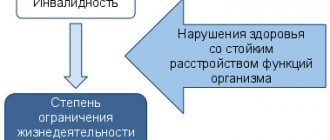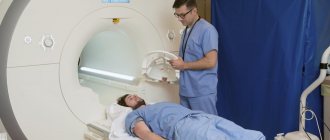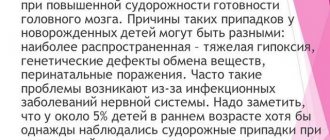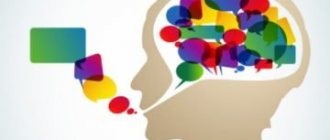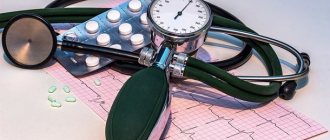One of the most common factors that provoke epileptic attacks are various diseases and their manifestations. Therefore, vitamins and antioxidants are mandatory for people suffering from epileptic seizures to maintain the level of immunity.
It is important to understand that uncontrolled use of drugs can also become a triggering factor for an attack, therefore the dosage and frequency of use should be clearly regulated by the attending physician.
Vitamins for epilepsy for adults differ significantly from their children's counterparts not only in the dosage of substances, but also in composition. For a fragile organism, certain impurities can provoke various kinds of complications, which in the context of epilepsy can become a serious threat to the life and health of the patient.
Family and Children
What can you do for epilepsy?
Despite many contraindications, people with epileptic disease are full members of society. They can engage in certain activities, have family and friends. Can people with epilepsy have children? If an epileptic woman has a close relationship with her partner in her life, then she may well become pregnant and give birth to a baby. But you should prepare for the pregnancy process in advance.
Seizures of the disease can pose a threat to bearing a baby. During attacks, there is a high probability of injury; as a result, placental abruption may develop. A pregnant woman needs to more carefully monitor her daily routine, rest, and nutrition. It is important to take the right vitamins, folic acid and others. However, throughout the entire period of bearing the baby, the woman takes anticonvulsants. The better a woman’s health and well-being, the higher the chances of giving birth to a healthy child and raising him.
A woman suffering from epilepsy can give birth either by caesarean section or naturally. However, it is important to remember that the baby receives AEDs (anti-epileptic drugs) from the mother during pregnancy and after birth. You should be prepared for the possibility that your newborn will experience allergic reactions.
Vitamins for epilepsy in adults
Attacks are associated with a lack of micro- and macroelements.
- Deficiency of vitamins B1 and B6 can trigger seizures or pyridoxine seizures.
- Vit. can reduce the frequency of attacks, especially with temporal lobe epilepsy. E (tocopherol).
- Folic acid in combination with other drugs should be used under the strict supervision of a doctor, since after an attack its amount in the brain decreases. An excess of this nutrient has an eliptogenic effect (the frequency of seizures increases)
- Vitamin D deficiency can often be observed when taking antiepileptic drugs that increase the activity of liver enzymes.
- The use of vitamins E and C remains relevant for epileptics. Their regular intake as prophylactic agents effectively affects the body and prevents the development of seizures.
A little about the disease
With epilepsy, the patient suffers from characteristic seizures. These are convulsions, hallucinations, confusion, panic, unexpected aggression, mood swings, etc. There are many reasons for the development of epilepsy:
- meningitis;
- stroke;
- multiple sclerosis;
- brain injury;
- alcoholism and drug addiction (it has been noticed that drinkers often suffer from various forms of epilepsy);
- hereditary tendency.
This is a severe chronic brain disease. Complex drug therapy is used for treatment. It is complemented by physiotherapy and diet. For epilepsy in adults and children, it is prescribed only after examination, when the diagnosis has been accurately established.
Epileptics have increased brain activity associated with electrical impulses. In different parts of the organ, a disorder occurs, manifested by specific attacks - epileptic seizures. In the general clinical picture, various mental disorders are observed; they define a group of symptoms.
In different parts of the organ, a disorder occurs, manifested by specific attacks - epileptic seizures.
Manifestations of epilepsy are varied, have a broad classification, and occur with or without seizures. All this can negatively affect the human body, so help for epilepsy should be provided on time.
The manifestations of an epileptic seizure in an adult and a child are different. Signs in young patients are not always detected early. In most cases, parents notice a disturbance of consciousness during the transition from one form of epilepsy to another. In other cases, epileptic seizures develop according to the standard algorithm of actions.
Before epilepsy, mild dizziness and sometimes auditory or visual hallucinations appear.
- The previous condition is characterized by mild dizziness, sometimes accompanied by auditory or visual hallucinations.
- After loss of consciousness, convulsions develop that affect all muscle groups or individual areas, and breathing is impaired.
- Convulsions are uncontrollable; during loss of consciousness, the risk of biting the tongue and bloody saliva flowing into the respiratory system increases.
- Seizures cause greater stress on the cardiovascular system, which leads to changes in heart rhythm. Possible release of vomit.
A form of epilepsy with the absence of seizures is accompanied by a slight loss of consciousness, the person’s eyelids tremble, and the tongue sinks.
The most complex symptoms include status epilepticus. Convulsions alternate, and the person remains unconscious. It is critical and requires emergency treatment for an epileptic seizure.
Convulsions often cause fear in others. From the outside, the epileptic looks unnatural, but it is at this moment that he needs support. To alleviate a person’s condition, it is necessary to perform first aid measures for epilepsy. This will prevent possible complications.
Emergency treatment for epilepsy can begin shortly before the attack. For many people around them, seizures begin suddenly, but this is a misconception. The patient's pupils dilate, he becomes anxious, and his movements contain short-term muscle contractions. Behavior becomes active and irritable, reflexes and reactions are significantly dulled.
If you suspect an attack:
- the patient is protected from objects that can cause injury;
- prepare a soft cushion from available materials and place it under the head;
- free the neck from a tight collar, tie and other things;
- if convulsions begin indoors, open windows and doors to increase access to fresh air.
During an epileptic attack, first aid includes several stages. It is necessary to remain calm and quickly respond to the situation. If all recommendations are followed, the epileptic will not be able to cause unconscious harm to himself.
A patient with epilepsy is placed on his side and a soft cushion is placed.
- You need to be nearby throughout the seizure. The assistant inspects the space in search of nearby objects that threaten the person if he falls. Furniture and other items are moved away.
- It is better to record the duration of the seizure in order to later provide this information to a specialist at a medical institution.
- The patient is lowered, placed on his side and a soft cushion is placed. Holding an epileptic by force during seizures is dangerous, as it leads to injury.
- To avoid clenching the jaws, a cushion made of fabric or other thing is placed in the mouth. Hard objects are contraindicated; they can burst from muscle tension.
If a child's skin turns blue and breathing has stopped, artificial ventilation is required.
First aid for epilepsy in children is provided in the same order as in an adult. When convulsions occur, the child is walked around from behind and his head is secured to avoid a strong blow. During convulsions, the child is forced to lie on his side. Clothing that restricts movement and limits oxygen access is removed, unbuttoned or torn.
When closing the teeth, the patient's mouth is not opened. When relaxing, place a towel or a bundle of fabric in it. If a child's skin turns blue and breathing has stopped, artificial ventilation is required. Do not give any medications during seizures.
After providing first aid for epilepsy, the time is checked again and the patient is reassured. If necessary, help wash away the vomit. As long as the tongue is in good shape, there is no risk of its root sinking. But when the patient recovers from convulsions or falls asleep, it is necessary to wrap the tongue with cloth.
- At the first attack, hospitalization of the patient is desirable. He will need a thorough examination and initial monitoring.
- The seizure resulted in injury - a blow, a cut, a severe concussion.
- The duration of seizures ranges from 5 minutes or more.
- Repeated seizure after a short time.
- Deterioration of the patient's condition, intensification of the syndrome even after a course of antiepileptic treatment.
Epileptics need full sleep; sleep rhythm disturbances and sudden awakenings are not allowed. To correct this, you will need to change the operating mode. Restricted sleep leads to seizures.
Epileptics need full sleep; sleep rhythm disturbances and sudden awakenings are not allowed.
As for nutrition, it should be balanced and contain vitamins and minerals. Only for severe types of epilepsy is a low-carbohydrate diet recommended. Changes in metabolism during some types of fasting lead to a decrease in the number of attacks. The diet is not used as a one-sided therapy; it is contraindicated in chronic pathologies and in children.
The patient is required to follow safety rules that are associated with limiting situations that lead to injury. Epileptics should avoid walking at high levels, near large bodies of water, open fire and near transport.
To ensure that first aid for epilepsy attacks is provided on time, you need to tell everyone around you about your condition - colleagues, fellow students, friends. Information about the disease is not hidden when applying for a job, since a sudden attack can negatively affect future work.
About 15% of patients suffer from convulsive syndrome when spending a long time in front of a computer or TV. This is triggered by the rhythmic flickering of light when the patient is highly sensitive to light.
Patients with epilepsy have significant limitations in choosing a job. Many jobs that involve risk or maintaining complex equipment are not available. But with the help of regular treatment, patients can receive a decent education and become socially stronger in the team.
Pharmacological properties
Pharmacodynamics
Propofol is a drug for general anesthesia, the effect of which begins in 0.5 minutes and lasts for a short period.
After administration of the drug, a decrease in mean arterial pressure (BP) and slight changes in heart rate are observed. However, during the period of maintaining general anesthesia, hemodynamic parameters remain relatively stable, and the frequency of their adverse changes is low. Respiratory depression may occur during the administration of propofol. These undesirable effects are qualitatively characteristic of other means of intravenous anesthesia and are easily controlled in a clinical setting.
The action of propofol helps to reduce cerebral blood flow, lower intracranial pressure and cerebral metabolism. With initially elevated intracranial pressure, its decrease is more pronounced.
As a rule, recovery from anesthesia occurs quickly, with a clear consciousness, and is not accompanied by headaches, postoperative nausea or vomiting.
It should be noted that cases of postoperative nausea and vomiting after propofol anesthesia, compared with inhalation anesthesia, are less common. This may be due to its antiemetic effect. Usual concentrations of Propofol achieved in clinical settings do not suppress the synthesis of adrenal hormones.
Pharmacokinetics
After the administration of propofol, the decrease in its concentration level is characterized by three phases: the first is very rapid distribution (half-life of 2–4 minutes), the second is rapid elimination (half-life of 30–60 minutes), the third is the slow redistribution of propofol into the blood from poorly perfused tissue.
The process of distribution and excretion from the body occurs quickly. The total clearance of Propofol is 1.5–2 l/min. Metabolized mainly in the liver with the formation of its conjugates and quinol. Metabolites are excreted in the urine.
The pharmacokinetics of propofol within the recommended rate of administration is linear, this allows it to maintain its equilibrium concentration in the blood when used to maintain anesthesia.
Trips
People with epileptic illness benefit from traveling. Some even write blogs about how to do this if you are diagnosed with epilepsy. But you need to be more careful when organizing trips than ordinary people.
Since epilepsy is an insidious and complex disease, it is not recommended to fly with it. However, there are no contraindications to this. If this type of travel is the most optimal, the passenger must take with him on the plane the necessary
medicines. Before traveling by any type of transport, the patient should consult with the attending physician, and also have a good rest and gain strength.
What's the point
It is very important to organize nutrition for epilepsy correctly. This is a medical phenomenon. In a ketone diet, it is important to maintain certain proportions of proteins, fats, and carbohydrates. It is necessary to ensure a reduction in carbohydrate intake and an increase in fat intake. This diet should only be prescribed by a doctor.
A little history. In the mid-19th century, doctors noticed that in children with epilepsy, after increasing the amount of fatty foods they consumed on the menu, the frequency and severity of seizures decreased. This was observed in 9 out of 10 patients. Substances with anticonvulsant effects had not yet been discovered. Doctors simply recommended increasing the amount of fat.
In the 20s of the last century, American nutritionists developed a menu in which the main part was fats. It was recommended to reduce the number of proteins. Carbohydrates were generally kept to a minimum.
In the 20th century, drugs for epilepsy began to be actively used. They forgot about the diet. The American director gave her new life. His daughter suffered from epilepsy, and the medications caused a lot of side effects. In desperation, the father tried to use the forgotten diet. Soon the number of attacks dropped sharply.
The diet for epilepsy in children is especially carefully selected. Fats play a huge role in it. They may be included in milk drinks. It is important that the doctor selects an individual ratio of fats and other components for a particular patient. You need to eat wisely. Food should not load the body with carbohydrates. This can lead to decreased activity during childhood and adolescence. The task of parents is to strictly monitor the child’s diet.
It is precisely such a serious restriction that gives the expected result - substances that can provoke another attack do not enter the body. Seizures are observed much less frequently. There are reviews from patients according to which the attacks stopped altogether during the ketogenic diet. These lucky ones allowed themselves to live a normal life.
It is important that the doctor regularly asks the patient how he feels after starting the diet, how his condition is changing, whether the frequency and duration of attacks has changed, why they have become less frequent. He must take into account the emerging disorders and side effects. The main requirement of this diet is moderate fasting and strict food restrictions.
The ketogenic diet for epilepsy in adults requires adherence to significant restrictions. If you decide on such a diet, you will need to forget about mineral water. It contains too many trace elements and gas. The patient will need to limit himself in physical activity. If there is evidence for this, the doctor may even recommend bed rest to the patient.
For adults, the first three days are, in fact, a hunger strike. You can only drink. On the fourth day you can eat solid food. It is important to do everything strictly according to the doctor’s recommendations.
All products are divided into several steps (5-6). In total they should make up the daily requirement. If you have epilepsy, you should not overload the body with large portions of food. They should be very small and make up only a quarter of the usual portion.
During the diet, you need to completely remove pasta, bread (wheat), carrots, potatoes, beets, cereals, sugar, honey, and wine from your diet. Usual porridge, bread, etc. may provoke new attacks. In addition to fatty foods, preference is given to buckwheat, legumes, peas, rice, and fennel. These foods contain difficult-to-digest carbohydrates.
special instructions
The administration of Propofol should only be carried out by an anesthesiologist or an intensive care specialist in a room equipped with resuscitation equipment, with the mandatory presence of artificial ventilation and oxygen enrichment equipment. During anesthesia, careful monitoring of the patient's condition is necessary. Particular attention is required in patients in whom propofol is administered to provide sedation during surgical and diagnostic procedures without the use of mechanical ventilation.
To reduce pain at the injection site during induction, it is recommended to use forearm or elbow veins for injection. In addition, joint administration with lidocaine is indicated.
Particular care must be taken when using propofol for anesthesia in children. The safety and effectiveness of the drug for providing sedation in patients under 18 years of age has not been established.
Clinical experience with the use of propofol for sedation in patients in this age group confirms the high risk of serious side effects, including death. The likelihood of fatal consequences increases with the presence of respiratory tract infections and exceeding recommended doses.
Due to the lack of sufficient vagolytic action, the use of propofol increases the risk of developing bradycardia and asystole. Therefore, for patients at risk, it is advisable to prescribe an anticholinergic drug, which is administered intravenously before induction or during the period of maintaining anesthesia.
Due to the risk of developing seizures in patients suffering from epilepsy, induction of anesthesia can only be started after the patient has taken the necessary antiepileptic drugs.
The content of approximately 100 mg of lipids in 1 ml of emulsion should be taken into account when prescribing Propofol to patients with lipid metabolism disorders or when combined with fat-containing drugs.
In case of liver and/or renal failure, low concentration of albumin in the blood, the risk of hemolysis increases even when using therapeutic doses of the drug. Therefore, in patients with these pathologies, it is recommended to regularly monitor the relevant indicators.
The patient is transferred to a regular department only after complete awakening from general anesthesia.
Use in conjunction with alcohol consumption is contraindicated.
Home improvement
The comfort and safety of a person with epilepsy depends on the arrangement of objects in the house. It is better to replace kitchenware made of ceramics and glass with plastic ones. It is also important not to use knives frequently. A gas stove is not the best option for a person suffering from epilepsy.
You should be careful when choosing furniture. Also, you should not furnish the room with tables and sofas with sharp corners. It would be good if there was a soft carpet on the floor.
Sharp accessories can also be dangerous. It is better to avoid glass attributes. You should not put them in a visible place. The safety of the bathroom presupposes that there are no electrical appliances, as well as razors, in the public domain. It is not recommended to close. It's better to put up a "busy" sign. Otherwise, the patient will not be able to receive help.
For a person suffering from epilepsy, various stepladders and ladders are dangerous. Therefore, living in a multi-story building without an elevator is dangerous for epileptics.
Contraindications
The diet is not for everyone. It makes sense to use it if medications do not work or cause serious side effects. Using a diet does not mean that you need to give up medications. It is possible that the new diet will help the body better perceive the active substances of anticonvulsants and other drugs. This will ease the disease. But the use of antibiotics requires stopping the diet.
The diet has the following contraindications:
- Diseases of the endocrine system (diabetes, metabolic disorders, etc.).
- Liver diseases.
- Kidney diseases.
- Problems in the cardiovascular system.
- Lipid, cerebrovascular pathologies.
- The need for surgery.
It is important to approach your diet as responsibly as possible. You will need to keep a special diary. It must note when the seizures occurred and how they developed. Only a doctor can determine how long you need to stick to this diet. You should avoid sports activities during this time.
Side effects and special instructions
Knowledge of the benefits of vitamin B12, why cyanocobalamin is injected and what the dosage should be is often not enough
It is important to consider the side effects of taking:
- Increased agitation.
- Allergic reactions, sometimes hives.
- Pain in the heart area, rapid heartbeat.
- Violation of purine metabolism, hypercoagulation.
Special instructions:
Lack of cyanocobalamin can be confirmed diagnostically before prescribing the drug. This is caused by the substance's ability to hide folic acid deficiency. Monitoring peripheral blood parameters. On days 6-8 after the start of treatment, it is worth determining the level of iron and the number of reticulocytes
In addition, it is important to keep the color indicator, hemoglobin and red blood cell volume under control. The check is carried out within 30 days once or twice a week
After 3-4 tests are enough within 30 days. If the level reaches 4-4.5 million/μl (for red blood cells), checks are carried out less frequently - once every 5-6 months. In the presence of angina pectoris, a tendency to form blood clots, as well as during lactation and pregnancy, it is prohibited to exceed the dosage.
Safe behavior
If a person is diagnosed with epilepsy, there is no need to hide this fact from others. They should be aware that a person may have a seizure. Household members and work colleagues should also be notified about this.
Bad habits negatively affect the severity of seizures and their consequences. This applies to nicotine and alcohol addiction. Epilepsy and smoking are incompatible. After all, an attack that occurs in a person with a cigarette in his mouth can result in a fire. Smoking a hookah is also not recommended. Alcohol contributes to the activation of seizures. Women are not recommended to drink more than one glass of wine or beer. It's better to choose non-alcoholic drinks. You cannot be coded if you are sick.
Epileptics are prohibited from taking steam baths and saunas. It is better to prefer a shower to taking a bath. High temperatures are not recommended
Many people are concerned about whether it is possible to get a license with epilepsy. In Russia, driving a car for people with epilepsy is officially prohibited, since the risk of road accidents for people with epilepsy is higher.
Pathogenetic role of potassium and magnesium deficiency in the development of neurological diseases
About the article
Authors: Kotova O.V. (KSMA - branch of the Federal State Budgetary Educational Institution of Further Professional Education RMANPO of the Ministry of Health of Russia, Kazan), Ryabokon I.V.
For citation: Kotova O.V., Ryabokon I.V. Pathogenetic role of potassium and magnesium deficiency in the development of neurological diseases // Breast Cancer. 2012. No. 29. S. 1489
Potassium Potassium is the main intracellular cation. Normally, the concentration of potassium in plasma is 3.5–5 mmol/l, and in cells – 150 mmol/l. Potassium metabolism is due to its intake from the outside and excretion by the kidneys in the urine. This amount is 1.9–5.9 g of potassium per day. The potassium content in the extracellular fluid is less than 2% of its total content in the body. The high intracellular potassium content is ensured by the work of the so-called “sodium-potassium pump” - a special protein structure located in the cell membrane, the operation of which requires the energy of adenosine triphosphate (ATP) molecules and the presence of magnesium ions. The sodium-potassium pump begins to work harder when the level of potassium in the blood increases under the influence of aldosterone, “stress hormones” catecholamines (adrenaline and norepinephrine) and insulin
This creates a resting transmembrane potential, the presence of which is extremely important for the normal functioning of nerve and muscle tissue.
Headache is a disease that has been discussed since the time of Hippocrates. And, despite
Chronic viral hepatitis (CVH) is currently a serious medical problem.
Pros of the ketogenic diet
Is the ketogenic diet safe and appropriate for childhood epilepsy? For children from one year to 12, adjustments are made. It includes a lot of fatty cocktails. These diet drinks are based on milk. The development of their components is carried out strictly by a specialist (doctor or nutritionist). He calculates in detail the permissible doses of fats, proteins, and carbohydrates in food.
Little patients can drink not only cocktails, but also eat diet ice cream. The nutritionist must accustom the fragile little body to fatty foods. It is fats that help cope with epileptic seizures. They can cause “freezing” epilepsy. During this period, the disease does not make itself felt.
The list of prohibited and permitted products is selected only individually. Only a doctor has the right to prohibit the consumption of certain foods. If prohibited incorrectly, internal organs may even fail. The doctor must take into account the patient’s age, his state of health, the severity of the disease, and what medications the prescription is for. If the diet is prepared correctly, it will help restore strength, get back in shape, and reduce the number of attacks and their severity.
If you create a menu correctly, fasting should not bring significant discomfort. In this case, much less calories will enter the body. Since the foods are quite fatty, and snacking is also allowed, the patient will not be bothered by a strong feeling of hunger. After starting a diet, the pancreas produces less insulin than usual. This reduces the risk of cardiovascular pathologies.
The ketogenic diet can also be used to combat excess weight. In 6 days you can lose up to 5 kg. If you decide to go on this diet to achieve slimness, it makes sense not to limit your fluid intake. This way, toxins will leave the body more quickly and cells will be renewed.
To ensure that the diet does not harm your health, be sure to consult a nutritionist or your doctor before starting it. Only a healthy body will be able to turn on hidden reserves to provide nutrition to the internal organs and the brain.
Painkillers
Sometimes attacks are accompanied by pain. In these cases, doctors solve several problems at once:
- relief of severe pain;
- preventing its manifestation in the future;
- return of the patient to physical activity.
In this case, remedies are chosen without pronounced side effects; there are already enough of them for such an illness.
Cinnarizine for epilepsy:
Bulgarian prescription drug in tablet form; has not only an analgesic, but also a vasodilator effect without affecting blood pressure; taken after meals in doses up to 25 mg; Use with caution during pregnancy and Parkinson's disease.
Mexidol:
- It is believed that with similar effects, the drug also improves memory;
- causes a minimum of allergic reactions;
- Recently the drug has been declared a prescription drug.
Sport
Exercise is not contraindicated for people with epilepsy. However, the choice of a particular sport should occur with the participation of a doctor. Weightlifting or athletics is not the best option for an epileptic. But team games such as volleyball and football are useful. The doctor may also recommend gymnastics. However, it is important that you do not overexert yourself during any activity.
You don't have to give up the pool at all. But it is important to take precautions:
- there should be a person next to the epileptic who is swimming who can help him in case of danger;
- It is not recommended to dive (from a tower or pool);
- the pool water temperature should not be too low;
- You should not visit the pool when you are feeling unwell;
- The depth of the pool should not be large, and you should not swim too far.
Indications for use
The main indication for use is directly taking medications to combat epilepsy. Many of them, when used for a long time, affect the content of vitamins in the body, in particular B9, which can affect the appearance of certain disorders.
The substance is prescribed to women of childbearing age, pregnant women and those planning pregnancy.
This will help prevent hereditary disorders of vitamin metabolism, which can provoke seizures in early childhood and can be diagnosed after the baby is born. Doctors can also prescribe this component to children suffering from the disease.
Side effects
The following side effects may occur with a keto diet:
- The stool is broken.
- Activity decreases.
- The acidity of the blood changes (decreases).
- In case of diabetes, this diet is fraught with death.
If the ketone diet is contraindicated for you, you just need to pay attention to what you eat. It makes sense to refuse:
- food that is difficult to digest;
- salty;
- acute;
- smoked
Liquid intake is limited.
Acidification of brain tissue helps stop seizures
The study was conducted on mice prone to epileptic seizures. The fact that they suffer from this particular disease was confirmed by their reaction to the antiepileptic drug valproic (2-propylvaleric) acid. In addition, it was in mice that suffered from seizures that a defect in the Apt1a3 gene was observed.
After this, the “defective” mice were crossed with animals that had an additional copy of the normal Apt1a3 gene. Although half of the second generation of Myshkin mice continued to carry the defective gene, they no longer suffered from seizures because they had received a duplicate copy of the healthy gene from their other parent.
Half of the offspring generally carried only non-defective Apt1a3.
Recommended menu
We offer a menu for the week.
Allowed for use:
- chicken, turkey;
- dairy and fermented milk;
- eggs;
- sea fish (herring, salmon, tuna).
To properly enter the diet, you need to fast for three days. You are only allowed to drink plain water. You can drink 150-200 ml at a time. Mineral water is also prohibited, even if it is without gas. From the fourth day you can carefully introduce foods.
Day four:
- butter (teaspoon), boiled eggs (2 pcs), tea or coffee with heavy cream;
- boiled sausages (2 pcs.), quarter of a tomato, mayonnaise (one and a half teaspoons);
- cottage cheese (fat) with sour cream;
- boiled chicken breast (1 pc.), drained butter. (10 gr.), green beans (steamed), olive oil (2 tablespoons), tea or coffee with cream.
Day five:
- bread with butter (butter);
- turkey (150 g), vegetable salad (cucumber and onion, dressed with olive oil);
- cabbage soup with sour cream (fat), pork fried with tomatoes, tea with the addition of heavy cream;
- scrambled eggs with brisket, fresh cucumber, bread (slice).
Day six:
- four quail eggs (hard-boiled), coffee with cream;
- boiled beef (150 g);
- boiled turkey, tomato salad with mayonnaise;
- lean boiled fish, boiled asparagus (1/2 serving).
The diet, as you can see, is very strict. Many people will find the portions too small. This is true, therefore small snacks are allowed. Between meals you can indulge in fermented milk products.
The goal of the ketogenic diet is to burn fat tissue. At the same time, muscle mass does not suffer, because the body receives enough protein food. Even athletes use this method of nutrition. This is a source of strength and energy.
The use of vitamin B9 for cosmetic purposes
In cosmetology, this acid is widely used in regenerating and soothing products; it also has a positive effect on hair, namely, it strengthens and heals it and prevents early baldness and gray hair.
Folic acid for hair
Liquid folic acid from ampoules is used for hair; it is not used in its pure form, but as an addition to masks, shampoos, and balms.
Recipe: add a few drops of vitamin B9 to burdock oil, apply to hair and wrap, wait 30-40 minutes, then wash your hair with shampoo adding one drop of this acid.
This vitamin is found in large quantities in food. Therefore, they can be used with great success in masks and hair wraps.
Recipe: a wonderful mask for dry and lifeless hair consists of avocado pulp (contains B9), yolk (also contains B9) and olive oil, you can add 2-3 drops of lemon juice. Apply the mask for 30 minutes.
Honey also contains a lot of folic acid, so honey rubs and masks with its addition will come in handy for owners of voluminous hair.
Vitamin B9 is simply necessary for the synthesis of nucleic acids, which transmit hereditary information, and therefore is indispensable for the processes of growth and regeneration of body cells, including hair.
In addition, this vitamin gives us a wonderful optimistic mood and confidence, and this can already make a woman beautiful and healthy.
Folic acid for weight loss
The use of vitamin B9 in its pure form, as part of a vitamin complex or in food products makes it possible to significantly increase the rate of metabolic processes in the body and the burning of the so-called fat depot.
When exposed to folic acid, internal fat breaks down into simple alcohols and fatty acids, which are removed from the body by the excretory system. Along with dietary restrictions and optimal physical activity, taking folic acid is included in the weight loss program. This can be either taking medication or eating foods containing large amounts of this vitamin.
TV
Should I give up my TV and computer?
In a small percentage of people with epilepsy and light sensitivity, watching television can trigger a seizure. But you can watch it if you take the following precautions:
- the distance between a person and the TV must be at least two meters;
- In addition to the TV in the room, there must be another source of lighting;
- You shouldn’t opt for big screens;
- The eyes of the viewer should be at the level of the screen.
As for the computer, an epileptic can work on it. But we must not forget about the safety rules:
- the room in which the computer is located should be bright;
- there should be no glare on the monitor from the light source falling on the monitor;
- the distance between the eyes and the computer is 30–35 centimeters;
- you need to work only in a calm state, a person should not be tired or exhausted; frequent eye breaks should be taken. The same rules apply to video games.
Medicines for epilepsy
There is a whole group of anticonvulsants and antiepileptic drugs. Their main goal is to reduce the reactivity of nerve cells that trigger the uncontrolled process of impulses spreading throughout the brain tissue. To do this you can:
- increase the activity of inhibitory neurons by activating receptors for gamma-aminobutyric acid (GABA);
- reduce activity, slow down the work of excitatory neurons, inhibiting N-methyl-D-aspartate receptors (NMDA);
- block the propagation of an electrical impulse by acting on pump proteins in the membranes of nerve cells that transport ions in and out.
All these drugs can prevent an attack, but do not remove its cause. In addition, they all have a depressant effect on the central nervous system as a whole. This means that when taking them, specific side effects develop: drowsiness, memory impairment, dizziness and impaired cognitive function.
This is why there is so much interest in alternative methods of treating epilepsy. They also will not cure a person, but can be used as a means of additional prevention, do not give such significant side effects, and can also neutralize many of the negative side effects of anticonvulsants. Some of these methods seem too simple, which, however, does not detract from their effectiveness.
Safe behavior
It is important for epileptics to treat their diet correctly and not eat everything that comes to hand. You should make the right diet. After all, some foods can trigger both migraine and epileptic seizures.
Most often, people with epilepsy are advised to eat more dairy products. But this does not mean that you need to exclude vegetables and meat from your diet. This food can be eaten, but it is better boiled. You need to eat varied and balanced. Food should be tasty and enjoyable. Proper nutrition helps increase the time between attacks. It is better to choose a diet together with your doctor.
If you have epilepsy, drinking alcohol is contraindicated. It is recommended to exclude even low-alcohol drinks. They aggravate the course of attacks. It is better to replace them with kvass, soft drinks, and cocktails.
It is not recommended to eat a lot of carbohydrates. The brain runs on glucose, but too much of it can trigger seizures. A protein-fat diet is preferable. Epilepsy attacks are also provoked by drinking too much liquid and overeating. You should eat no later than 2 hours before bedtime.
It is better to exclude salty and pickled foods or consume them to a minimum. You should also limit spices, smoked, and hard-to-digest foods. There is no need to add a lot of sugar or salt to your food.
Coffee lovers are concerned about whether it is possible to drink coffee if you have epilepsy. Doctors believe that it is better not to drink caffeine-containing drinks. But if you're a big coffee drinker, it's okay to treat yourself every once in a while. It is better to choose soft varieties of insoluble drink and dilute the coffee with milk. This also applies to tea.
Diet features for adults:
- You should eat about 4 times a day in small portions.
- For your table, you should choose food rich in proteins to restore the liver. After all, anticonvulsant medications have a negative effect on the liver.
- Foods containing vitamin B6 must be included in the diet.
- Food should not be eaten very cold or very hot.
- It is better to use gentle cooking methods.
- The consumption of “empty” carbohydrates, which quickly satisfy hunger, should be kept to a minimum.
What vitamins should I test for for epilepsy?
A thorough description of clinical manifestations, the results of an examination by a neurologist, as well as laboratory and instrumental examinations helps to determine the causes and nature of an epileptic attack.
- general blood analysis;
- biochemical blood test - allows you to determine the level of glucose, urea, creatinine, ALT, AST, calcium, potassium, sodium;
- general urine analysis;
- additional examination of the cerebrospinal fluid to exclude or confirm neuroinfection.
Job
It is important for people with epilepsy to feel valued in society. Some people assume that only sedentary work is suitable for people with epilepsy. This is wrong. It is important to choose an activity so as not to harm yourself or others. For example, sick people cannot work as a surgeon, driver, or pilot. It is also not recommended to drive, work at heights or in water. In other words, it is prohibited to work where there is a risk of injury.
It should be noted that each individual case is individual and when applying for a job, an epileptic undergoes a medical expert commission, where all controversial issues are resolved. Another point that people with epilepsy need to pay attention to is that they should not overexert themselves. Such workers get tired much faster
People suffering from epilepsy treat work conscientiously, do their work well and honestly. They are characterized by scrupulousness in business, attentiveness, and accuracy. These people always deliver their work on time.
What professions are suitable for an epileptic:
- fashion designer;
- laboratory assistant;
- artist;
- programmer;
- photographer;
- accountant;
- librarian;
- bibliographer;
- tailor.
It is even useful for epileptics to work. According to statistics, such people are less likely to experience attacks if they are employed. A healthy lifestyle and work that brings pleasure helps fight the disease. Work activity also smoothes out other character traits characteristic of epileptics. This is selfishness, excessive irritability, excitability. By doing useful work, a person suffering from this disease becomes happier.

